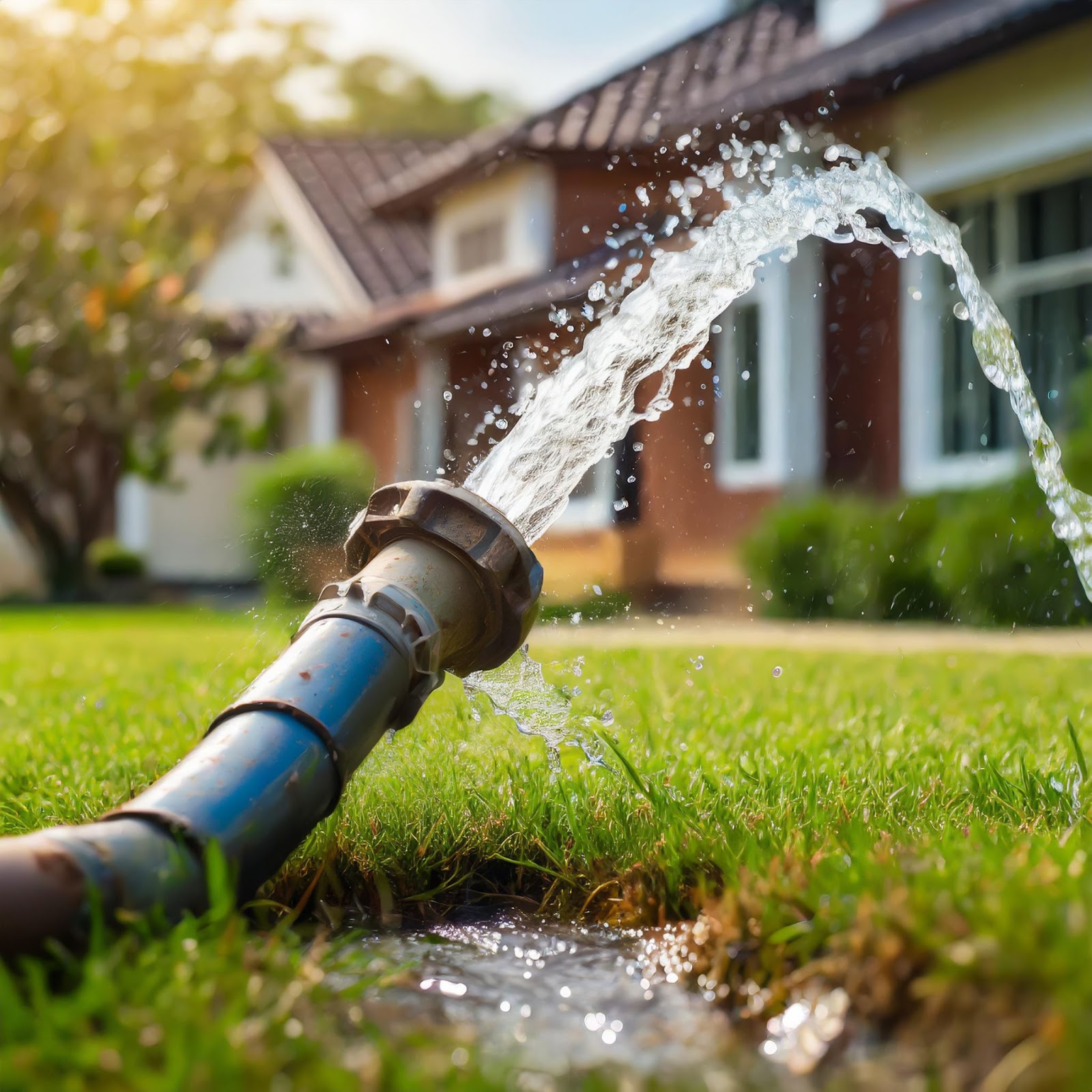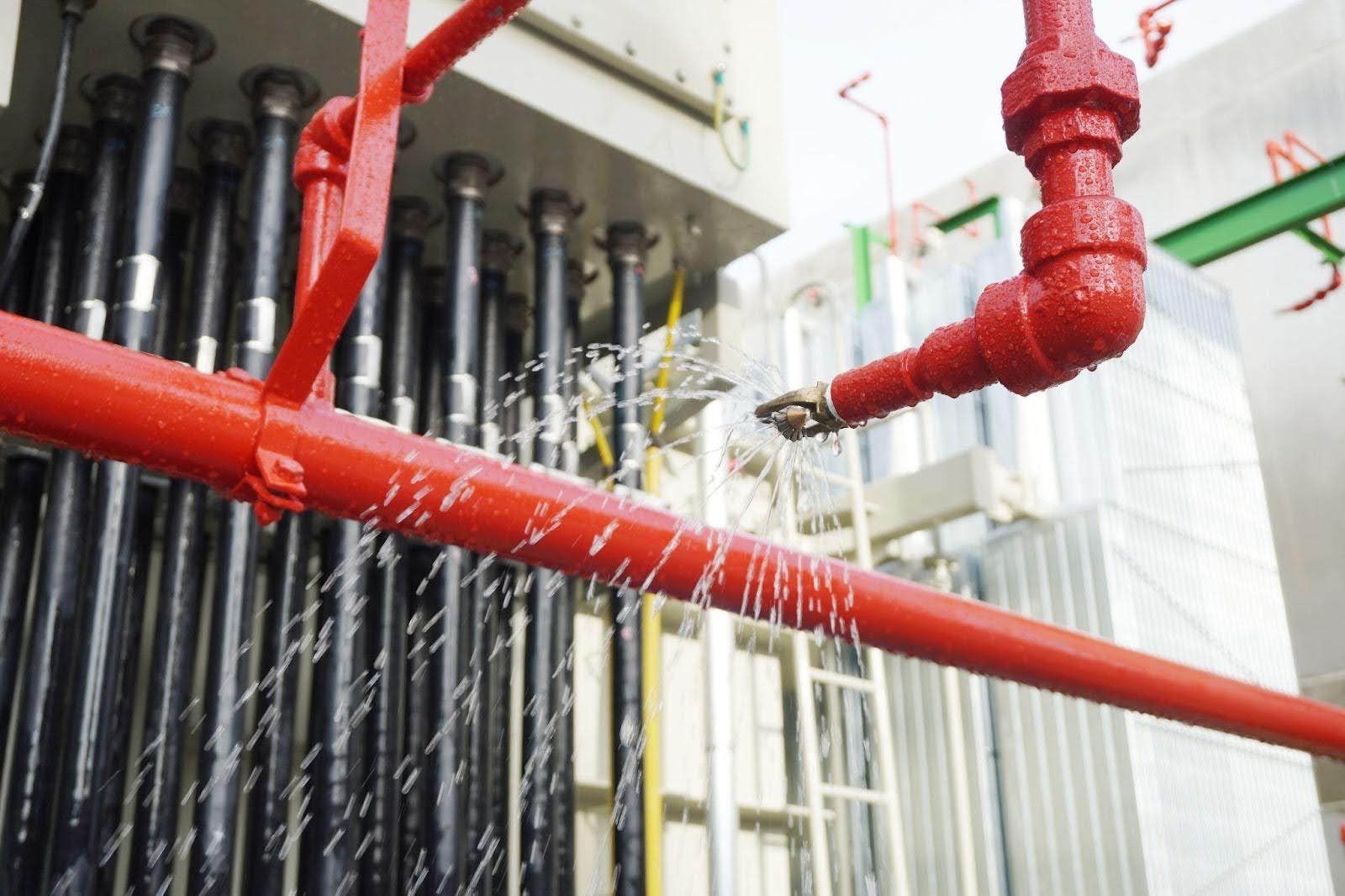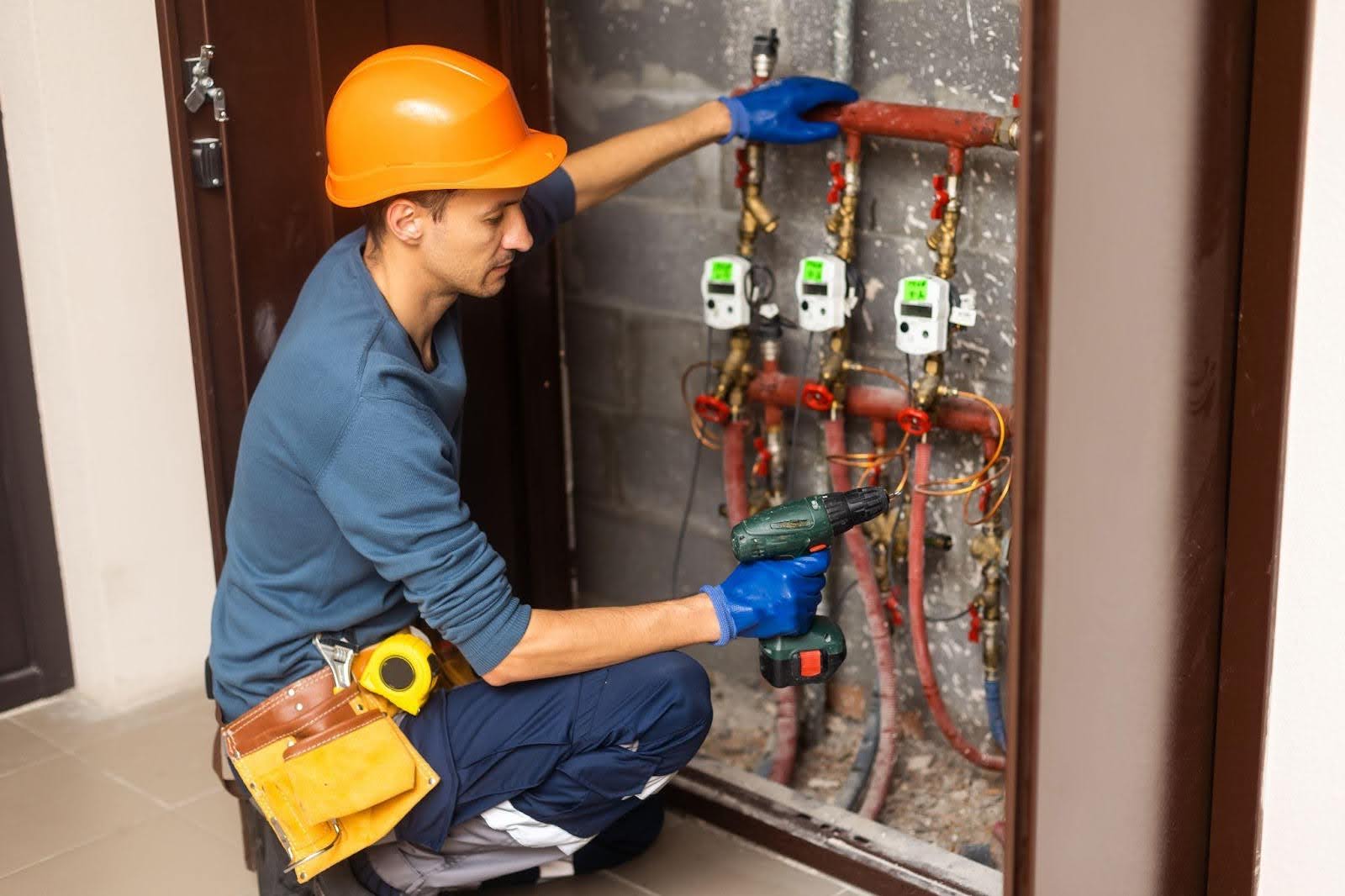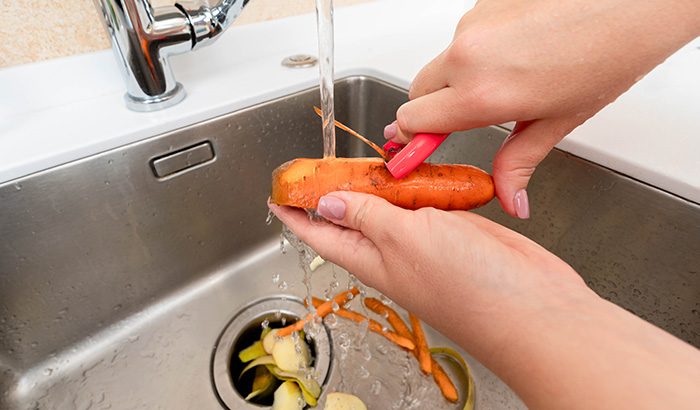A broken water main disrupts the water supply, causes severe flooding, and results in costly damage to roads and personal property. The sudden surge of water can also erode landscapes, seep into foundations, and even compromise the structural integrity of surrounding areas.
A broken water main is more than a minor inconvenience; it’s an urgent plumbing crisis that may lead to significant problems if not addressed immediately.
Recognizing the severity of such an event is crucial. Taking swift and decisive action not only mitigates these risks but also helps restore normalcy quickly. This guide outlines essential steps to effectively manage a broken water main, ensuring you handle the situation confidently and efficiently.
Identifying a broken water main
Recognizing the signs of a broken water main early saves you from extensive damage and disruptions.
Key indicators might include a significant reduction in water pressure throughout your home or building, unexpected water pooling on your property, discolored water, or spurts of air when turning on taps. You might also hear the continuous sound of water running when no taps are open, suggesting a serious leak in the system.
If you suspect a break, first ensure all water-using appliances are turned off and watch your water meter. If it continues to run, this suggests a significant leak. Look for signs of water bubbling up along the usual route of your water line, which might be visible along sidewalks or streets leading to your property.
Consulting with neighbors may also be helpful; a shared problem usually suggests an issue with the municipal line rather than your private plumbing. Finally, contact your water utility for further information and assistance; they will inspect the area and determine if the break is in the public system, affecting more than just your property.
Immediate steps to take
When you confirm a broken water main, act swiftly to minimize damage and ensure safety. First, locate and shut off the main water valve to your property. This crucial step stops water flow, helping to prevent further water loss and damage to your property. You’ll usually find this valve near the water meter or where the main water line enters your home or building.
Next, assess the situation for any electrical safety risks, especially if water has leaked into areas with electrical systems. If there’s any chance water has come into contact with electrical outlets, panels, or appliances, immediately shut off the power at the main breaker. Avoid handling electrical devices or switches until everything is dry and safe.
Contacting professionals
Once you’ve taken immediate action to secure your property, the next critical step is to call in the experts. Contact a professional plumber or reach out directly to your water utility company. These professionals have the expertise and equipment necessary to address and repair a broken water main effectively.
When you make the call, be ready to provide detailed information about the situation. Describe the location of the leak or break, estimate the severity of the issue, and mention any signs that led you to believe the water main is broken, such as unusual water pooling or reduced water pressure.
The more information you provide, the better prepared the professionals will be when they arrive, which expedites the repair process.
Mitigating damage
In the event of a water main break, minimizing water damage to your property is critical. Begin by moving valuables, electronics, and important documents to a higher elevation within your home to protect them from water damage.
If the break has caused significant flooding, consider using sandbags around the perimeter of your property to divert flowing water away from your foundation and lower floors.
Address potential contamination and safety hazards immediately. If there is any possibility that water has reached electrical outlets, appliances, or your main electrical panel, shut off the power at the circuit breaker to prevent electrical shocks.
Assume that any water from a broken main could be contaminated, so avoid contact with it if possible, and do not use it for drinking, cooking, or cleaning until the authorities confirm it is safe.
Understanding the repair process
When a professional plumber or a team from your water utility company arrives to address a broken water main, knowing what to expect helps ease any concerns.
Initially, the crew will assess the situation to determine the extent of the damage and the best approach for repairs. They’ll check for the exact location of the break and evaluate the surrounding area for any additional risks or complications.
During this assessment, the professionals might implement temporary solutions to restore partial water service or to prevent further damage. This could include bypassing the damaged section of the pipe or installing a temporary line. These measures ensure that you have access to some water services while they work on a permanent fix.
The repair team will keep you informed about the repair timeline and what work will need to be done. They may also advise on whether you’ll need to vacate your home during critical repair phases, especially if there’s significant excavation involved.
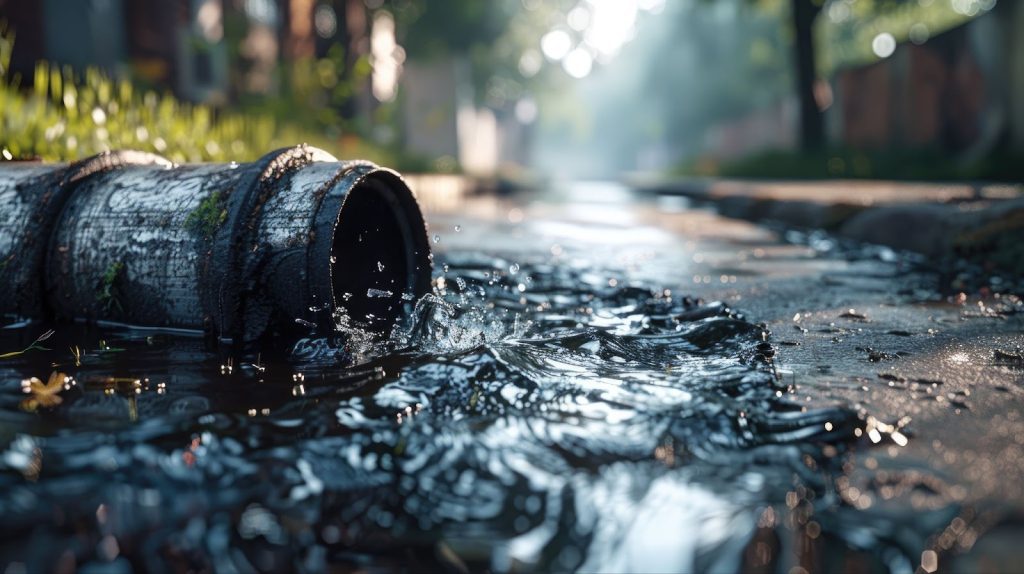
Preventive measures for the future
To prevent future water main breaks and ensure the longevity of your plumbing system, adopting a proactive maintenance routine is key. Regular maintenance checks help you identify and address minor issues before they escalate into major problems. Here are some tips to keep your plumbing system in top condition:
Regular maintenance checks
Schedule annual inspections with a licensed, professional plumber to examine your water main and other critical plumbing system components. These professionals spot signs of wear, corrosion, or potential weak points in the pipes that could lead to future breaks.
Monitoring tools
Invest in monitoring tools like water pressure gauges and leak detection systems. These devices provide real-time data about the health of your plumbing and alert you to abnormalities that may indicate potential issues.
For example, a sudden drop in water pressure could be an early sign of a leak or break in the system.
Pipe upgrades
Consider upgrading older pipes to more durable materials like copper or PVC, which can withstand environmental stresses better than older materials like iron or steel. Upgrading is especially important in areas prone to extreme weather conditions, which exacerbates existing vulnerabilities in your plumbing system.
Educational resources
Utilize resources provided by local water authorities or plumbing services to educate yourself about the needs and maintenance requirements of your specific plumbing system. Many providers offer tips, workshops, and detailed guides on maintaining a healthy plumbing system.
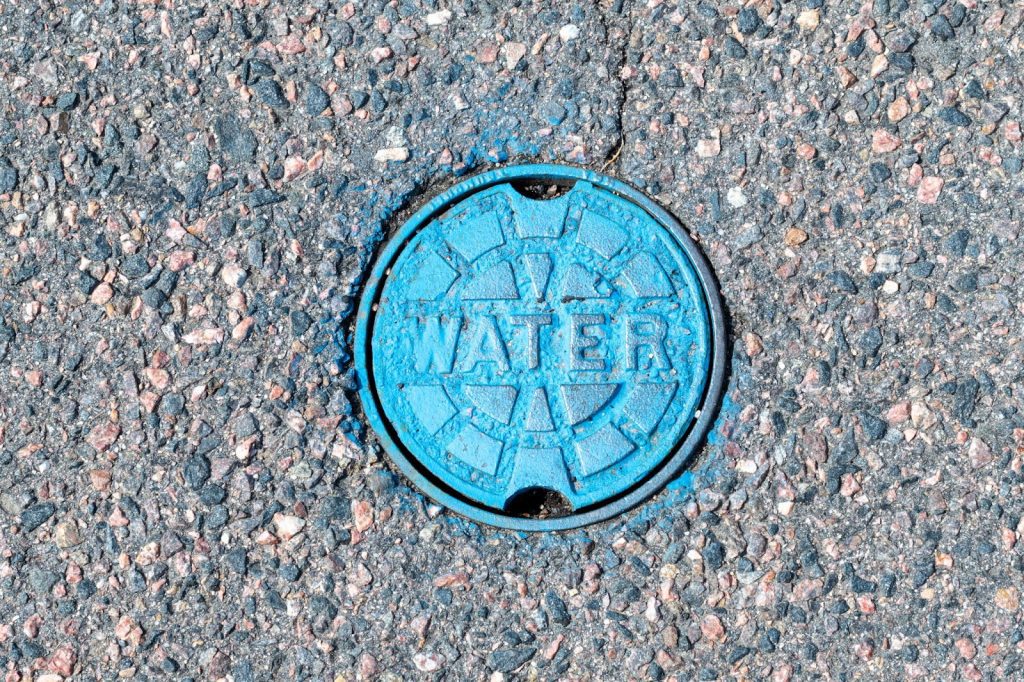
Call Salisbury Plumbing for reliable water main solutions
While the steps outlined in this blog help mitigate immediate damages and prepare for repairs, partnering with a trusted professional like Salisbury Plumbing ensures that your plumbing needs are comprehensively addressed. Salisbury Plumbing offers expertise in rapid response, skilled repairs, and preventive maintenance, making us your ideal ally in managing any plumbing crisis.
Don’t wait for an emergency to escalate; contact Salisbury Plumbing today or call 385-442-5952 to ensure your building’s plumbing system is in peak condition and ready to withstand any challenges.
toto slot

